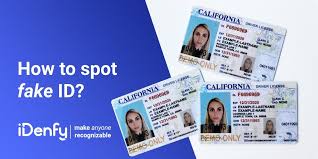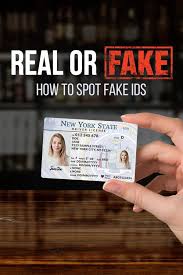Online ID services
1. Introduction to Online ID Services
As the world becomes increasingly digital, the need for secure and reliable online identification is more important than ever. Online ID services enable individuals and organizations to verify their identities remotely, facilitating secure access to a range of services including banking, healthcare, government applications, and e-commerce.
These services streamline identity verification processes, providing a safer way for users to access digital services and preventing identity theft, fraud, and unauthorized access. With innovations in biometric technologies, blockchain, and AI, online ID services have evolved from simple verification tools to comprehensive digital identity solutions.
2. The Evolution of Digital Identity
Digital identity has evolved over the past few decades, with each stage marked by technological advancements and regulatory changes:
2.1 Early Days of Online Identification
In the early days of the internet, user identification primarily relied on passwords and PINs. While these methods offered a basic level of security, they were also vulnerable to hacks, phishing, and data breaches.
2.2 Emergence of Two-Factor Authentication (2FA)
Two-factor authentication emerged as a more secure alternative to traditional passwords. Combining something the user knows (like a password) with something they possess (like a mobile phone), 2FA enhanced security by making it harder for unauthorized individuals to gain access.
2.3 The Rise of Biometric Authentication
As technology advanced, biometric authentication using fingerprints, facial recognition, and voice verification became popular. These methods added an extra layer of security and were especially effective in industries requiring high levels of security, such as finance and healthcare.
2.4 Integration with Blockchain and Decentralized Identities
The latest developments in online ID services involve blockchain technology and decentralized identity systems. These technologies allow for greater control over personal data and reduce the need for centralized storage of sensitive information, making identity theft more difficult.
3. Key Features of Online ID Services
Online ID services come with a range of features that make identity verification seamless, secure, and efficient. Here are some key characteristics:
3.1 Multi-Factor Authentication (MFA)
MFA uses multiple layers of verification to authenticate a user’s identity. It goes beyond just a password by including biometric data, one-time passcodes (OTPs), or hardware tokens.
3.2 Biometric Verification
Biometric data like facial recognition, fingerprint scans, and iris scans add an extra layer of security. These methods are increasingly being used in smartphones, ATMs, and access control systems.
3.3 Document Verification
Online ID services can validate government-issued documents such as passports, driver’s licenses, and national ID cards using Optical Character Recognition (OCR) and other technologies to ensure the documents are legitimate.
3.4 Liveness Detection
Liveness detection helps differentiate between a real person and a fake image or video. By requiring specific user actions during the authentication process (e.g., blinking or turning the head), this feature helps prevent spoofing.
3.5 Artificial Intelligence and Machine Learning
AI and machine learning algorithms can detect anomalies in user behavior, making it easier to identify potential fraud. These technologies also help automate the verification process, reducing manual intervention and improving efficiency.
3.6 Decentralized Identity Solutions
Using blockchain technology, decentralized identity solutions give users greater control over their data. This approach reduces dependency on central authorities and minimizes the risks associated with data breaches.
4. Market Analysis of Online ID Services
4.1 Market Growth and Trends
The online ID services market is rapidly expanding, driven by factors such as increased internet penetration, the growing need for cybersecurity, and the rise of digital economies. According to industry reports, the global identity verification market is projected to reach over $18 billion by 2025, growing at a compound annual growth rate (CAGR) of 14% from 2020 to 2025.
Several trends are shaping this market, including:
- Growing Adoption of e-Government Services: Many countries are implementing online ID services for accessing government services like healthcare, tax filing, and social security.
- Increasing Cyber Threats: With the rise in cybercrime, organizations are investing more in secure online identity verification methods to protect user data.
- Biometrics and AI Integration: The use of AI-powered biometric verification is becoming more common across industries, from banking to transportation.
- Rise of Remote Work: The shift towards remote work has driven demand for secure online authentication solutions.
4.2 Key Players and Competitive Landscape
The online ID services market is composed of various players, ranging from startups to established companies. Key players include:
- Jumio: Known for its biometric and document verification solutions.
- Onfido: Uses AI and machine learning for identity verification.
- ID.me: Provides digital identity solutions for government services.
- Auth0: Offers a platform for secure authentication and authorization.
These companies compete on factors like the accuracy of verification methods, ease of integration with existing systems, user experience, and pricing.
4.3 Regulatory Landscape
The regulatory environment surrounding online ID services is continually evolving. Compliance with data privacy regulations such as the General Data Protection Regulation (GDPR) in Europe and the California Consumer Privacy Act (CCPA) in the U.S. is critical for companies operating in this space.
5. Target Audience Analysis
Online ID services cater to a wide range of industries and user groups. Here’s a closer look at the primary target audiences:
5.1 Government and Public Sector
Governments are one of the largest users of online ID services. They use digital identification for a variety of purposes, including:
- e-Government Services: Online platforms for tax filings, healthcare access, and social security benefits.
- Border Control: Digital passports and visas facilitate secure and quick border crossings.
- Voting: Online voting systems require robust identity verification to ensure election integrity.
5.2 Financial Services
The finance industry requires stringent security measures to comply with Know Your Customer (KYC) and Anti-Money Laundering (AML) regulations. Online ID services help banks and fintech companies:
- Onboard New Customers Remotely: Verify user identities online without requiring in-person visits.
- Prevent Fraud: Detect suspicious activity and prevent identity theft.
5.3 Healthcare
Healthcare providers use online ID services to:
- Verify Patient Identities: Ensure that patients receive the correct medical records and treatments.
- Secure Access to Health Records: Protect sensitive medical information from unauthorized access.
- Enable Telehealth Services: Allow remote consultations and medical services with verified patients.
5.4 E-Commerce and Retail
For online retailers, identity verification helps:
- Prevent Fraudulent Transactions: Verify customers during high-value purchases.
- Enable Age-Restricted Sales: Ensure customers meet age requirements for purchasing products like alcohol or tobacco.
- Simplify Account Creation: Speed up the sign-up process with quick verification methods.
5.5 Travel and Hospitality
The travel industry uses online ID services for:
- Seamless Check-In: Allow travelers to check in online using digital IDs.
- Border Security: Speed up immigration checks with biometric data.
- Car Rentals: Verify driver’s licenses for car rental services.
6. Challenges Faced by Online ID Services
6.1 Privacy Concerns
One of the biggest challenges is protecting user privacy. While online ID services make identity verification more convenient, they also raise concerns about data misuse and breaches. Companies must adhere to strict data protection regulations and implement robust security measures.
6.2 Adoption Barriers
Certain regions and demographic groups may be reluctant to adopt online ID services due to factors such as lack of access to technology, low digital literacy, or distrust in online systems. Service providers need to focus on educating users and making systems user-friendly.
6.3 Interoperability Issues
Ensuring that different ID systems can work together seamlessly is another challenge. Various countries and organizations have different standards for digital identity, which can complicate cross-border services.
6.4 Regulatory Compliance
Keeping up with constantly changing regulations across different jurisdictions is a major hurdle for online ID service providers. They need to comply with local data privacy laws, which may vary significantly.
7. The Future of Online ID Services
The future of online ID services looks promising, with continued advancements in technology and growing adoption across industries. Here are some predictions for the future:
7.1 Expansion of Decentralized Identity Models
Decentralized identity models will likely become more common, allowing users to own and control their data. This shift towards user-centric identity management will reduce dependency on centralized databases and enhance privacy.
7.2 Greater Use of Biometric Authentication
Biometric technology will continue to evolve, with improvements in accuracy and speed. Facial recognition, voice verification, and even behavioral biometrics will become more widely used for secure authentication.
7.3 Integration with IoT Devices
The Internet of Things (IoT) will play a significant role in online ID services. Devices like smart home assistants, wearables, and connected cars will integrate identity verification features for secure interactions.
7.4 Enhanced AI and Machine Learning Applications
AI and machine learning will further improve the accuracy and efficiency of identity verification processes. These technologies will help detect fraud faster and enhance user experience by personalizing the verification process.
8. Case Studies: Real-World Applications of Online ID Services
8.1 Estonia: The World’s Leading Digital Society
Estonia is known for its advanced digital identity system, where almost all government services are available online. Citizens use a national e-ID card for tasks such as voting, accessing healthcare, and banking.
8.2 India: Aadhaar’s Impact on Digital Inclusion
India's Aadhaar program, one of the world’s largest biometric ID systems, provides a unique identification number to each resident, enabling access to government services, subsidies, and financial accounts.
8.3 Sweden: BankID and Its Role in Everyday Life
BankID is a widely-used electronic identification system in Sweden, enabling secure login to a variety of online services, including banks, insurance companies, and government portals.
9. Conclusion
Online ID services are reshaping how we verify identities in the digital world. From government services to e-commerce, these services offer a convenient and secure way to authenticate users while addressing the challenges of data privacy and fraud. With advancements in technology and widespread adoption across sectors, online ID services will continue to play a crucial role in the digital transformation.
As digital identities become more prevalent, organizations and governments must collaborate to develop standardized frameworks, enhance security protocols, and promote user education. This will ensure that online ID services not only protect user data but also drive innovation and inclusion in the global digital economy.
 Novelty ID
Novelty ID
 Novelty ID
Novelty ID
 Student engagement tools
Student engagement tools
 Student engagement tools
Student engagement tools
 Online ID services
Online ID services
 Online ID services
Online ID services
 Realistic holograms and securi
Realistic holograms and securi
 Scannable fake ID
Scannable fake ID
